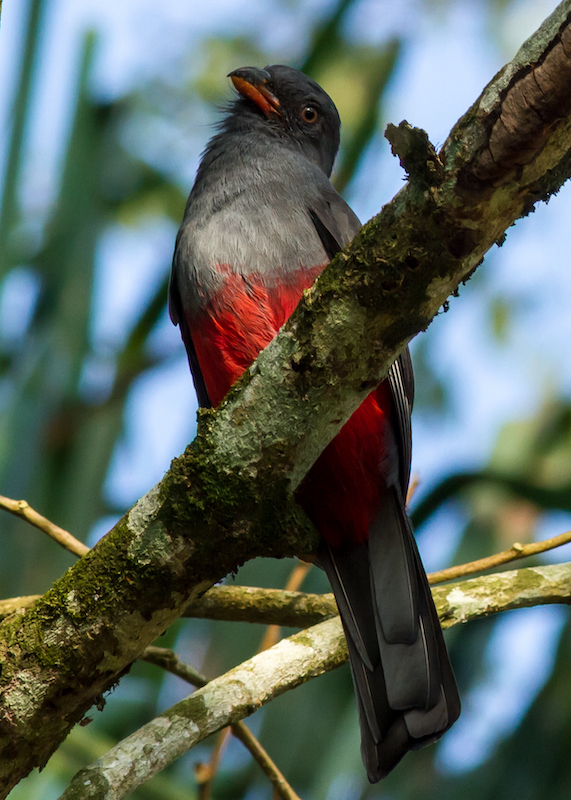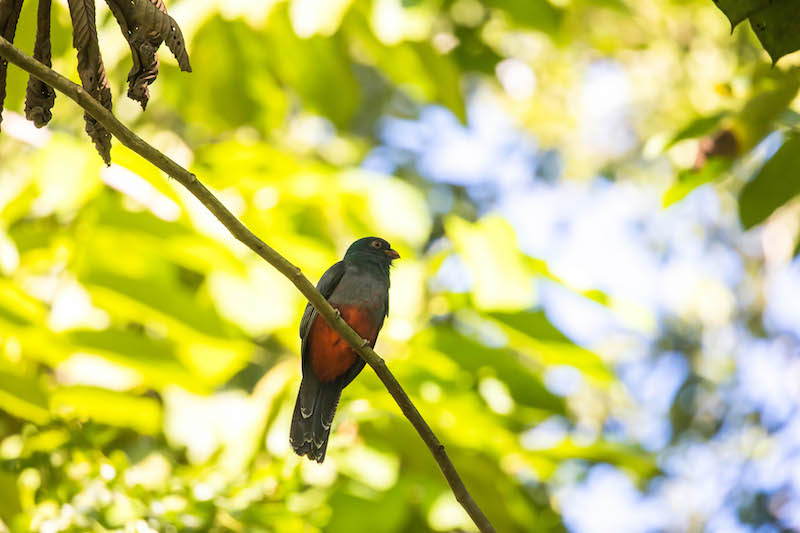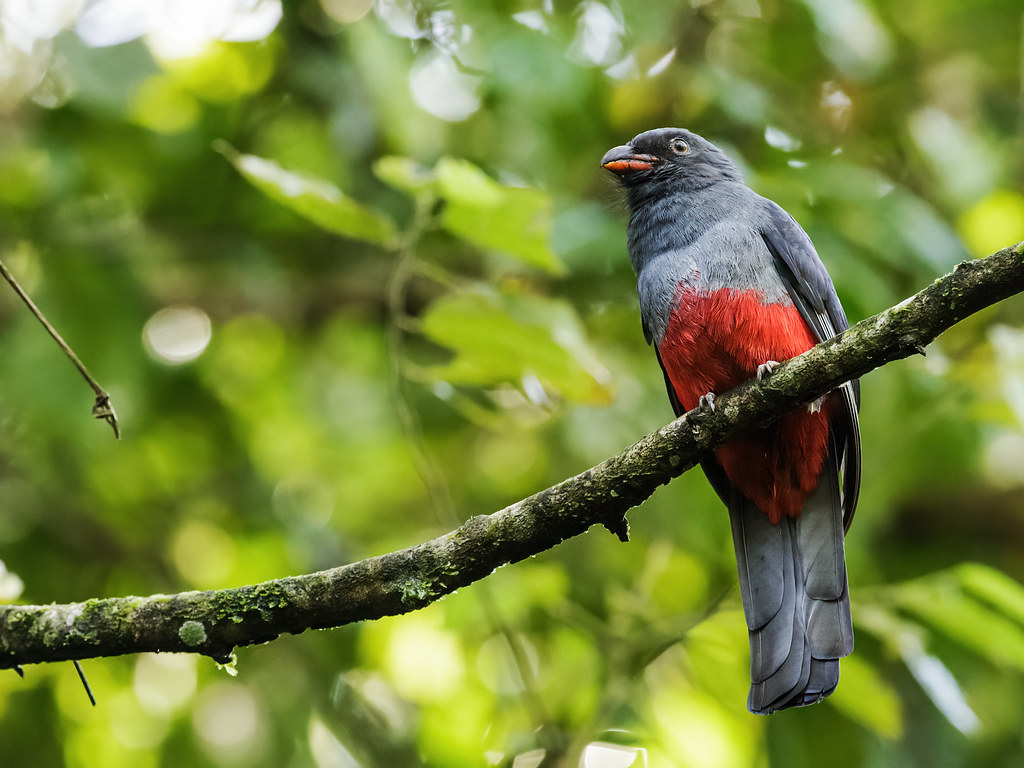SLATY-TAILED TROGON

KINGDOM: Animalia
PHYLUM: Chordata
CLASS: Birds
ORDER: Trogoniformes
FAMILY: Trogonidae
GENUS: Trogon
SPECIES: Trogon massena
The slaty-tailed trogon (Trogon massena ) is a near passerine bird in the family Trogonidae, the quetzals and trogons. It is found in Mexico, Central America, Colombia, and Ecuador.
Distribution
South America, North America.
Countries.
Belize, Costa Rica, Guatemala, Honduras, Mexico, Nicaragua, Panamá, Ecuador, Colombia
Biogeographical realms
Neotropical, Nearctic
The nominate subspecies of slaty-tailed trogon is found on the Caribbean slope from southern Mexico through Belize, Honduras, and Guatemala into Nicaragua. T. m. hoffmanni is found on the Caribbean and Pacific slopes of Costa Rica and Panama, and also in extreme northwestern Colombia. T. m. australis is found in western Colombia and far northwestern Ecuador. The species primarily inhabits the midstory to the canopy of tropical evergreen forests and mature secondary forests, and can also be found in gallery forest, coffee plantations, and mangroves. It is a bird of the lowlands, reaching only 600 m (2,000 ft) in Mexico and northern Central America. It is found locally as high as 1,200 m (3,900 ft) in Costa Rica, 1,400 m (4,600 ft) in Panama, and 1,100 m (3,600 ft) in Colombia.
In Costa Rica it is distributed in the shallows and slopes of the Atlantic slope, as well as in the South Pacific, even reaching the Carara area.

What does it look like?
Trogons have distinctive male and female plumages, with soft, often colorful, feathers. The slaty-tailed trogon is 30 to 35.5 cm (12 to 14 in) long and weighs about 140 to 155 g (4.9 to 5.5 oz). The nominate male has an orange-red bill, a dull black face, a chin, and an upper throat with a red-to-orange ring around the eye. The upperparts are metallic green that tends to golden green on the back and bluish green on the crown and rump. The breast is metallic green, and the belly and vent deep red. The folded wing has fine black-and-white vermiculation that looks gray at a distance. The upper side of the four central tail feathers are metallic green to bronzy green with black tips, the next pair mostly black, and the outermost pair entirely black. The undersides of the tail feathers are slate gray with black tips. The female replaces most of the male’s green with gray that is paler on the upper breast than on the upper parts. The upper side of the tail is black. The female’s maxilla is dusky gray.

Diet and Nutrition.
The slaty-tailed trogon forages for fruits and insects by sallying or hover gleaning from a perch. It often follows white-faced capuchin monkeys (Cebus imitator ) to catch insects displaced by them.
Mating Habits
The slaty-tailed trogon’s breeding season varies geographically but appears to span from February to July. Males and females display to each other by raising the tail and fluffing the upper tail covert feathers. It nests as high as 15 m (49 ft) in a cavity excavated in an occupied termite nest or decaying tree trunk. Both sexes excavate the nesting chamber. The typical clutch is two or three white or bluish-white eggs, and both sexes incubate them.
